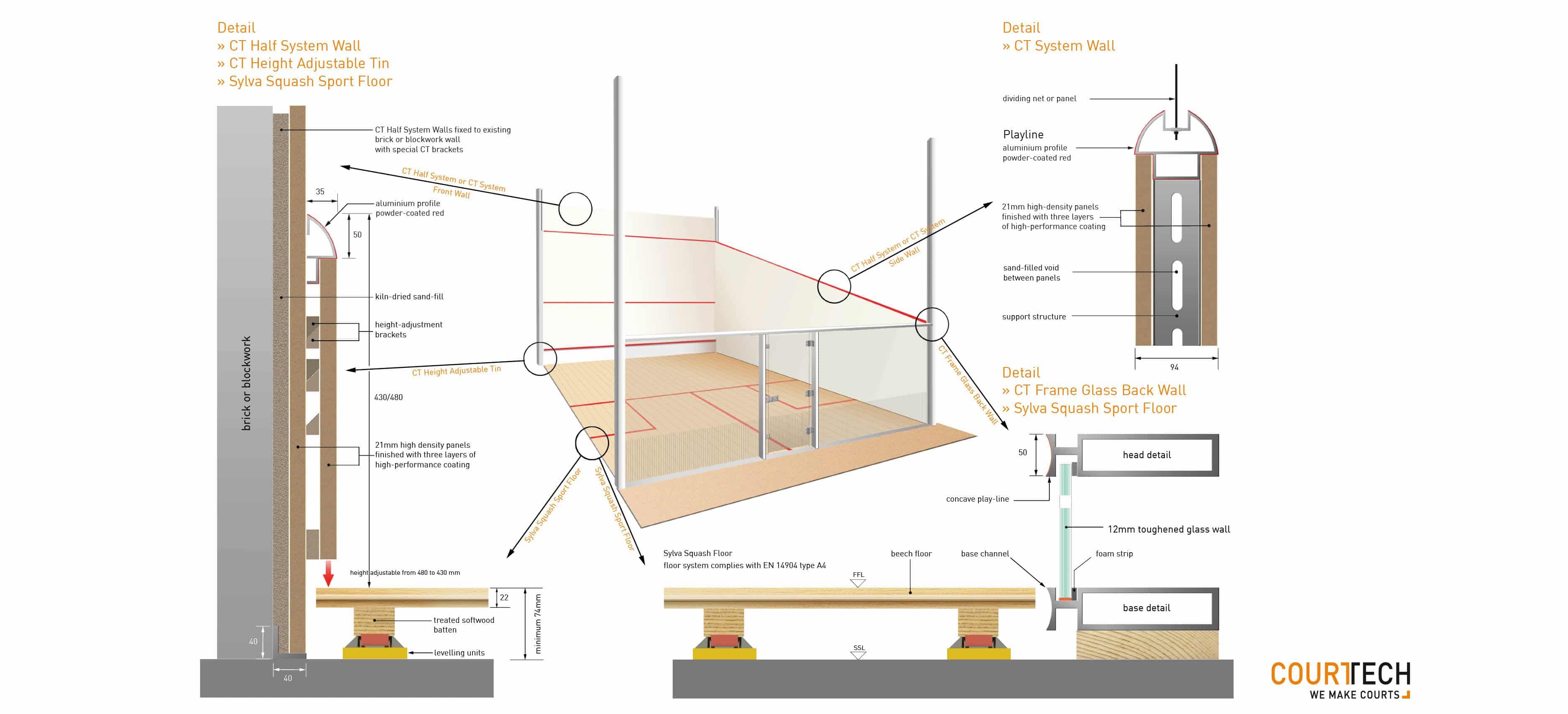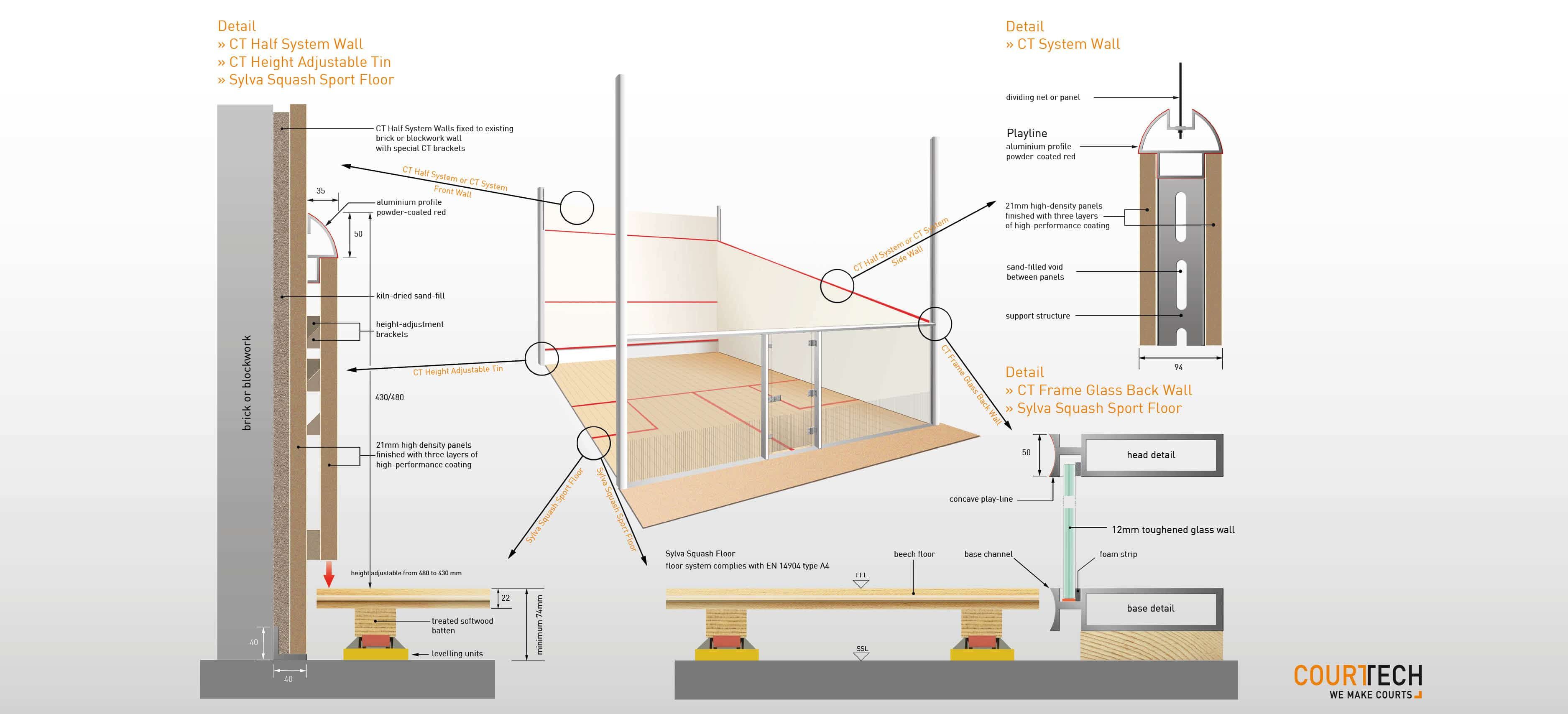CourtTech offers two kinds of wall solutions:
CT System Wall
No load-bearing walls are necessary for the CT System Wall. CT System Walls can be installed in the middle of a spacious hall, without any connection to the building. A minimum distance of 25mm to adjacent building walls is necessary.
The CT System Wall has a total thickness of 94mm, consisting of two 21mm thick RS special high density boards attached to steel profiles. The self-supporting wall elements are fixed on steel columns to the floor at two positions. The surface of the finished wall is coated 3 times. The system wall is filled with 2.5 tons of kiln dried sand. The System Wall is hard, flat and free of vertical joints. The out-of-play lines are made of red powder coated aluminium profiles – colour RAL 3001.
CT Half System Wall:
CT Half System Walls are made of the same material as the CT System Walls. The CT Half System Walls are fixed on the existing building masonry walls or concrete walls.
The CourtTech Half System Wall has a total thickness of 40 mm. The 21mm thick RS special high density boards are mounted onto the steel profiles. The CourtTech Half System Wall is filled with 1.2 tons of kiln dried sand. The surface of the finished wall is coated 3 times, is flat and free of joints. The out-of-play lines consist of red powder coated aluminium profiles – RAL 3001.
Also a combination of both CourtTech Wall Systems can be applied in one court.
CT Movable Side Wall:
The Movable Side Walls are the heart of the CourtTech Flexi Courts.
In a very short time two squash courts with one movable side wall can be transformed into a multifunctional sports hall or doubles squash courts with different court widths.
The CourtTech Flexi Court, ideally, consists of three squash courts with two Moveable Walls and can be transformed either into a multifunctional sports hall of 10 x 20m, or into two doubles squash courts.
The manually movable side wall is maintenance free. In the video stated below you can see the handling in detail.






